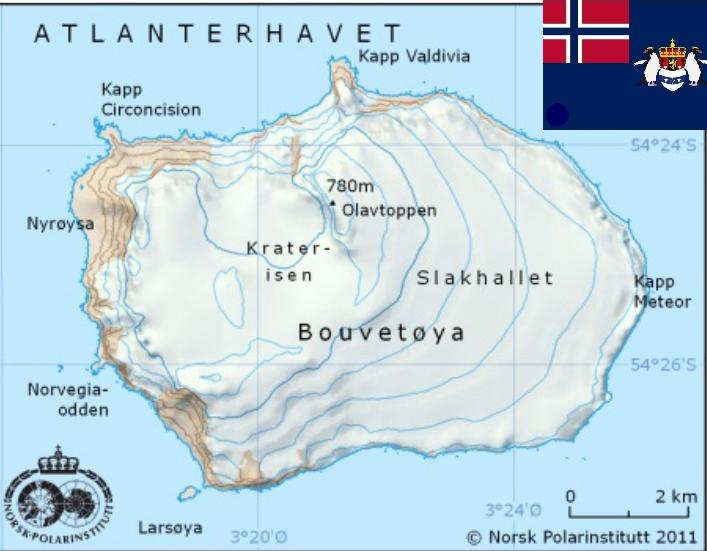Geographic Map of Bouvetøya, Norway


David Chen
Data Visualization Specialist
David Chen is an expert in transforming complex geographic datasets into compelling visual narratives. He combines his background in computer science ...
Geographic Analysis
What This Map Shows
This geographic map of Bouvetøya provides a detailed representation of this remote island, which is one of the world's most isolated pieces of land. Located in the South Atlantic Ocean, Bouvetøya is a Norwegian dependency, often regarded as a part of Antarctica due to its proximity to the Antarctic continent. The map showcases the island's topography, including its rugged terrain, glacial features, and the surrounding ocean waters. Interestingly, Bouvetøya is uninhabited, and the map highlights the absence of human settlements, which adds to its mystique as a natural wonder.
Deep Dive into Bouvetøya’s Geography
Bouvetøya covers an area of approximately 49 square kilometers and is characterized by a stark volcanic landscape. Its highest point, Olav Peak, reaches 780 meters above sea level. The island is largely covered by glaciers, which account for around 93% of its surface area. This ice cover plays a crucial role in the island's ecosystem and influences local weather patterns.
What's fascinating is that Bouvetøya was formed by volcanic activity millions of years ago. The last known eruption occurred around 1730, leaving behind a unique geological structure that is a mixture of volcanic rock and glacial deposits. The island's isolation has led to a very limited range of flora and fauna, with only a few hardy species of moss and lichen managing to survive in such harsh conditions. Interestingly, the surrounding waters are rich in marine life, including seals and various seabird species, which use the rocky outcrops for nesting.
The climate on Bouvetøya is classified as polar, with extremely cold temperatures year-round. The average temperature hovers around freezing, and the island is often shrouded in fog, making visibility challenging. Due to its remote location, the island experiences very few visitors, primarily researchers and scientists studying its climate and ecological impact.
Regional Analysis
While Bouvetøya itself is uninhabited, its geographic location provides insight into broader regional dynamics. Situated approximately 1,600 kilometers from the coast of Antarctica, the island serves as a critical reference point for climate studies in the Southern Ocean. The map illustrates how Bouvetøya is uniquely positioned at the confluence of several ocean currents, including the Antarctic Circumpolar Current, which significantly influences its climate and ecosystem.
In comparison to other islands in the region, such as the South Shetland Islands, Bouvetøya's volcanic activity and glacial cover make it distinct. The South Shetland Islands have a more diverse ecosystem, bolstered by human presence and research stations, whereas Bouvetøya remains untouched and pristine. The stark contrast between these regions emphasizes the varying impacts of human activity on island ecosystems and raises questions about conservation and ecological preservation.
Significance and Impact
Understanding the geography of Bouvetøya is essential for several reasons. Firstly, it serves as a natural laboratory for studying climate change, as its glaciers and ice caps provide crucial data on global warming trends. Researchers can analyze the island's ice core samples to gain insights into historical climate patterns and predict future changes in our global climate.
Moreover, Bouvetøya's status as a nature reserve highlights the importance of protecting remote ecosystems that are vulnerable to climate change and human interference. In a world where many natural landscapes are increasingly threatened, Bouvetøya stands as a testament to the resilience of nature. The island’s unique geological features and its role in marine biodiversity further emphasize its significance in global ecological studies.
In conclusion, Bouvetøya may be small and remote, but its geographic features and the implications of its environment are anything but trivial. As we continue to study such isolated places, we gain invaluable knowledge that can help inform conservation efforts and enhance our understanding of Earth's complex systems. Have you ever thought about how such distant islands can play a crucial role in environmental science? The insights we gather from Bouvetøya could be pivotal for our planet's future.
Visualization Details
- Published
- October 27, 2025
- Views
- 14
Comments
Loading comments...